
The Majestic Chundja Canyon: Kazakhstan's Natural Wonderland
Discover the awe-inspiring Chundja Canyon in Kazakhstan, a natural wonder filled with dramatic cliffs, vibrant colors, and rich cultural heritage.
Chundja Canyon, located in the heart of Kazakhstan, is a stunning natural wonder that offers unparalleled beauty and adventure. The canyon is carved by the Charyn River, and its dramatic cliffs and vibrant colors create a breathtaking landscape that will leave you in awe. Visitors are often struck by the sheer scale and grandeur of the canyon, which spans over 150 kilometers and features rock formations that date back millions of years. Exploring Chundja Canyon is an unforgettable experience. You can hike along the canyon's trails, which offer panoramic views of the surrounding mountains and valleys. The area is also home to diverse wildlife, including eagles, foxes, and various reptiles, making it a paradise for nature enthusiasts. For those seeking a more relaxed visit, there are numerous spots perfect for picnicking and unwinding amidst nature's splendor. In addition to its natural beauty, Chundja Canyon is rich in cultural history. The local Kazakh people have a deep connection to the land, and you can learn about their traditions and way of life through guided tours and local interactions. Whether you're an adventurer, a nature lover, or a cultural enthusiast, Chundja Canyon has something to offer everyone.
Local tips in Chundja Canyon
- Visit during spring or autumn for the best weather and to avoid the summer heat.
- Bring plenty of water and snacks as there are limited facilities in the area.
- Wear sturdy hiking boots to comfortably explore the canyon's trails.
- Hire a local guide to learn about the area's history and wildlife.
- Don't forget your camera to capture the stunning landscapes and wildlife.
The Majestic Chundja Canyon: Kazakhstan's Natural Wonderland
Chundja Canyon, located in the heart of Kazakhstan, is a stunning natural wonder that offers unparalleled beauty and adventure. The canyon is carved by the Charyn River, and its dramatic cliffs and vibrant colors create a breathtaking landscape that will leave you in awe. Visitors are often struck by the sheer scale and grandeur of the canyon, which spans over 150 kilometers and features rock formations that date back millions of years. Exploring Chundja Canyon is an unforgettable experience. You can hike along the canyon's trails, which offer panoramic views of the surrounding mountains and valleys. The area is also home to diverse wildlife, including eagles, foxes, and various reptiles, making it a paradise for nature enthusiasts. For those seeking a more relaxed visit, there are numerous spots perfect for picnicking and unwinding amidst nature's splendor. In addition to its natural beauty, Chundja Canyon is rich in cultural history. The local Kazakh people have a deep connection to the land, and you can learn about their traditions and way of life through guided tours and local interactions. Whether you're an adventurer, a nature lover, or a cultural enthusiast, Chundja Canyon has something to offer everyone.
When is the best time to go to Chundja Canyon?
Iconic landmarks you can’t miss
Baiterek
Discover Baiterek, Astana's iconic monument symbolizing dreams and aspirations, offering breathtaking views and a unique cultural experience.

Charyn Canyon National Park
Explore the breathtaking Charyn Canyon National Park, a natural wonder of towering cliffs and vibrant landscapes in Kazakhstan, perfect for nature lovers and adventurers.

Altyn Emel National Park
Explore the stunning landscapes, unique geological formations, and rich wildlife of Altyn Emel National Park, a natural wonder in Kazakhstan.
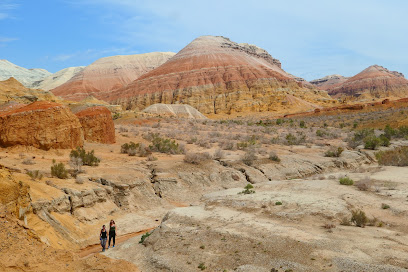
Aisha Bibi Mausoleum
Discover the stunning Aisha Bibi Mausoleum, a 11th-century architectural gem in Kazakhstan, rich in history and cultural significance.

Raiymbek Batyr monument
Explore the Raiymbek Batyr Monument in Almaty, a historic landmark celebrating Kazakh bravery and cultural heritage amidst stunning scenery.

Atameken Ethno-Memorial Map of Kazakhstan
Explore Kazakhstan's heritage at the Atameken Ethno-Memorial Map, featuring stunning miniatures of iconic landmarks in a beautiful open-air setting.

Charyn Canyon view point
Explore the breathtaking Charyn Canyon View Point, where stunning rock formations and vibrant landscapes create an unforgettable adventure in Kazakhstan.

Kara Dala Hot Springs Resort, Chundzha, Almaty Province, Kazakhstan
Discover the serene Kara Dala Hot Springs Resort, a rejuvenating escape in Almaty Province, known for its healing waters and stunning natural backdrop.
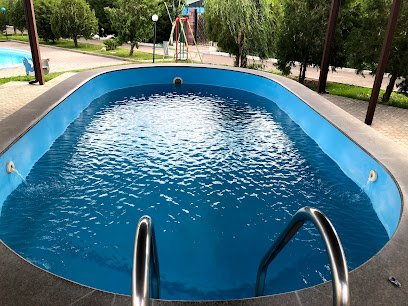
Charyn Canyon Viewpoint
Discover the stunning beauty of Charyn Canyon Viewpoint, a natural wonder in Kazakhstan known for its breathtaking landscapes and vibrant rock formations.

Kolsai Lakes National Park
Discover the stunning beauty of Kolsai Lakes National Park, where nature's tranquility meets adventure amidst breathtaking alpine landscapes.

Charynskiy Kan'on.
Explore Charyn Canyon's breathtaking landscapes, vibrant rock formations, and serene hiking trails in the heart of Kazakhstan's natural beauty.

Turn to Charyn Canyon
Experience the breathtaking beauty of Charyn Canyon, Kazakhstan's natural wonder with dramatic landscapes and rich biodiversity.

Temirlik Canyon
Explore Temirlik Canyon, a breathtaking national park in Kazakhstan, offering stunning landscapes and thrilling outdoor adventures for nature enthusiasts.

Lunar Canyon
Explore the captivating landscapes of Lunar Canyon, a nature preserve near Kurtogay, where adventure and tranquility meet in breathtaking beauty.

Asy plateau
Discover the stunning Asy Plateau in Kazakhstan, a breathtaking tourist attraction perfect for nature lovers and adventure seekers.

Unmissable attractions to see
Shymbulak
Explore Shymbulak, the ultimate mountain retreat near Almaty, offering skiing, outdoor adventures, and breathtaking scenery year-round.

Karlag museum
Explore the poignant history of Kazakhstan at the Karlag Museum, a memorial park dedicated to the victims of political repression during the Stalinist era.

ULAN HOT SPRING RESORT Горячие Источники
Explore the rejuvenating powers of Ulan Hot Spring Resort in Kazakhstan, where serenity meets natural healing in a breathtaking landscape.

Asy plateau
Discover the breathtaking beauty and cultural richness of the Asy Plateau, a hidden paradise in Kazakhstan perfect for nature lovers and adventurers.

Қазанқұдық
Explore the captivating beauty and rich cultural heritage of Qazantqaq, a must-visit tourist attraction in Azaktan, Kazakhstan.

Essential places to dine
Navat
Experience authentic Asian cuisine at Navat in Almaty - where every dish tells a story through rich flavors and fresh ingredients.

U Afanasicha
Experience the rich flavors of Kazakhstan at U Afanasicha, where culinary tradition meets modern dining in Almaty.

Kishlak
Experience authentic Uzbek cuisine at Kishlak in Almaty - where tradition meets flavor in every dish.

Line Brew Almaty
Experience exquisite dining at Line Brew Almaty, where premium steaks meet elegant English-themed decor for an unforgettable culinary journey.

Darejani
Savor authentic Georgian cuisine at Darejani in Almaty – a culinary journey through rich flavors and warm hospitality.

Alasha
Discover Alasha: A top-rated restaurant in Almaty offering exquisite Uzbek cuisine alongside European and Kazakhstani delicacies.

ABAY Restaurant
Experience the essence of Kazakhstan at ABAY Restaurant - where traditional flavors meet modern dining in Almaty.

Olivier Restaurant & Bar
Discover the exquisite flavors of Europe at Olivier Restaurant & Bar in Almaty – where every meal is a celebration.
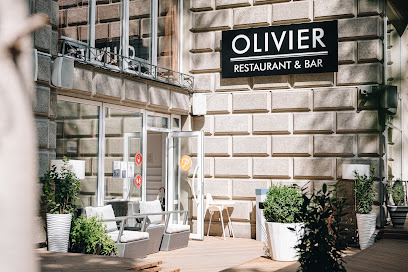
INZHU restaurant
Experience unparalleled Western cuisine at INZHU Restaurant in Almaty - where elegance meets flavor in every dish.

Rifugio del Monte
Experience exquisite European cuisine at Rifugio del Monte in Almaty - where tradition meets culinary excellence amidst stunning surroundings.

Line Brew Reserve
Discover the exquisite flavors of Kazakhstan at Line Brew Reserve – where culinary artistry meets warm hospitality in Almaty.

Chechil Forum
Experience authentic Kazakh cuisine at Chechil Forum in Almaty—where tradition meets flavor in a vibrant setting.
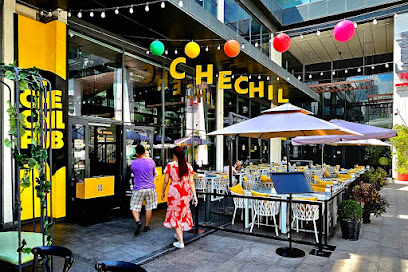
khasinn
Discover culinary excellence at Khasinn in Zaozernyi – where local flavors meet international cuisine in an inviting atmosphere.

Tary restaurant
Discover exquisite Western cuisine at Tary Restaurant, nestled near the stunning Sharyn Canyons in Tamerlik.

Markets, malls and hidden boutiques
MEGA Alma-Ata
Discover MEGA Alma-Ata, Almaty's vibrant shopping mall, offering a fusion of fashion, dining, and entertainment for an unforgettable experience.

Mega Silk Way
Explore Mega Silk Way in Astana: A premier shopping destination with diverse stores, dining options, and family-friendly entertainment.

Dostyk Plaza
Explore Dostyk Plaza in Almaty: A Shopping Paradise with Local Flavors and Global Brands.

Шымкент плаза
Experience Shymkent Plaza, the ultimate shopping and entertainment destination in Shymkent, Kazakhstan, showcasing local culture and global brands.

Esentai Mall
Experience luxury shopping, exquisite dining, and vibrant entertainment at Esentai Mall, the ultimate lifestyle destination in Almaty, Kazakhstan.
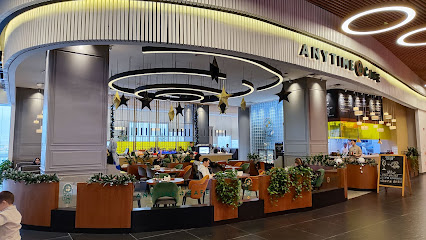
Astana Mall
Discover unparalleled shopping and dining at Astana Mall, the ultimate retail experience in Kazakhstan's vibrant capital.

Charyn Canyon National Park
Experience the stunning geological marvels and vibrant ecosystems of Charyn Canyon National Park in Kazakhstan, a natural wonder like no other.

TsUM
Experience the best of shopping and local culture at TsUM, Almaty's premier department store, where modern elegance meets delightful dining options.

Villa Boutiques & Restaurants
Explore luxury shopping and gourmet dining at Villa Boutiques & Restaurants, Almaty's premier shopping destination offering a unique experience.

Charynskiy Kan'on.
Explore the breathtaking beauty of Charynskiy Kan'on, a stunning canyon park in Kazakhstan that offers adventure, stunning views, and rich biodiversity.
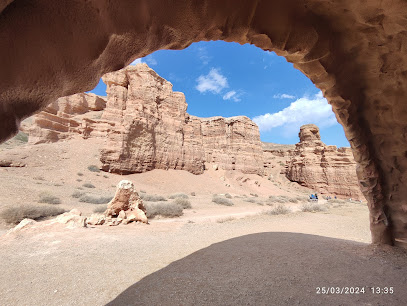
Талисман
Explore the artistry of Kazakhstan at Талисман, where unique souvenirs and local craftsmanship await in the heart of Astana.

Temirlik Canyon
Explore the breathtaking beauty of Temirlik Canyon, a national park showcasing stunning landscapes and diverse wildlife in Kazakhstan.

SINICHKI.STORE
Explore SINICHKI.STORE in Almaty for unique gifts, costume jewelry, and fashion accessories that capture the essence of Kazakhstan's culture.

Bestamak Canyon
Discover the stunning vistas and vibrant ecosystems of Bestamak Canyon, a true natural treasure in Kazakhstan's wilderness.

KERUEN souvenirs
Explore KERUEN Souvenirs in Astana for authentic gifts and handcrafted treasures that embody the spirit of Kazakhstan.

Essential bars & hidden hideouts
Sky Bar
Sky Bar: A Luxurious Nightlife Experience with Stunning Views of Almaty and the Tian Shan Mountains.

Bla Bla Bar
Discover the vibrant nightlife of Almaty at Bla Bla Bar, where exceptional drinks and lively music create unforgettable experiences.

Chalopanyn Uyy
Experience the vibrant nightlife of Otar at Chalopanyn Uyy, a lively bar offering a unique blend of local drinks and warm hospitality.

Local Phrases about Chundja Canyon
-
- HelloСәлем
[Salem] - GoodbyeҚош келдіңіз
[Qoş keldiniz] - YesИя
[Iya] - NoЖоқ
[Jok] - Please/You're welcomeРахмет
[Rahmet] - Thank youРахмет
[Rahmet] - Excuse me/SorryКешіріңіз
[Keshiriniz] - How are you?Қалайсыз ба?
[Qalaisız ba?] - Fine. And you?Жақсым. Сізді?
[Jaqsym. Sizdi?] - Do you speak English?Сіз ағылшынша сөйлейсіз бе?
[Siz ağılşınşa söylesiz be?] - I don't understandМен түсінбеймін
[Men tüsinbeymin]
- HelloСәлем
-
- I'd like to see the menu, pleaseМенюге қарау керек, рахмет
[Meniuge qaraw kerek, rahmet] - I don't eat meatМен майытты ішмеймін
[Men mayıttı ishmaymin] - Cheers!Тоқтамайын!
[Toqtamayın!] - I would like to pay, pleaseТөлеу керек, рахмет
[Töleu kerek, rahmet]
- I'd like to see the menu, pleaseМенюге қарау керек, рахмет
-
- Help!Көмек!
[Kömek!] - Go away!Ауыр жерге кет!
[Awır jerge ket!] - Call the Police!Полицияға қоңырау шал!
[Politsiyağa qoñırau şal!] - Call a doctor!Докторға қоңырау шал!
[Doktorğa qoñırau şal!] - I'm lostМен алға кеттім
[Men alg'a kettim] - I'm illМен ауырмын
[Men awırmin]
- Help!Көмек!
-
- I'd like to buy...Сатып алғым келеді...
[Satıp algım keledi...] - I'm just lookingТек көремін
[Tek köremin] - How much is it?Ол канша?
[Ol qanşa?] - That's too expensiveОл тым дорын
[Ol tım dorın] - Can you lower the price?Бағамен төмендетуіңіз болар ма?
[Bağamen tömendetuiniz bolar ma?]
- I'd like to buy...Сатып алғым келеді...
-
- What time is it?Сағат неше?
[Sağat neşe?] - It's one o'clockБір сағатта
[Bir sağatta] - Half past (10)Онда бір жарым
[Onda bir jarım] - MorningТаң
[Tañ] - AfternoonКеш
[Keş] - EveningКеш
[Keş] - YesterdayКеше
[Keşe] - TodayБүгін
[Bügin] - TomorrowЕртең
[Erteñ] - 1Бір
[Bir] - 2Екі
[Eki] - 3Үш
[Üş] - 4Төрт
[Tört] - 5Бес
[Bes] - 6Алты
[Altı] - 7Жеті
[Jeti] - 8Сегіз
[Segiz] - 9Тоғыз
[Toğız] - 10Он
[On]
- What time is it?Сағат неше?
-
- Where's a/the...?...қайда?
[...qayda?] - What's the address?Мекен-жай қандай?
[Meken-jay qanday?] - Can you show me (on the map)?Картада көрсетсеңіз бе?
[Kartada körsetsenis be?] - When's the next (bus)?Келесі (автобус) не уақытта?
[Kelesi (avtobus) ne waqtta?] - A ticket (to ....)Билет (....ға)
[Bilet (....ğa)]
- Where's a/the...?...қайда?
History of Chundja Canyon
-
Chundja Canyon, a geological marvel in southeastern Kazakhstan, was formed millions of years ago through the erosive actions of wind and water. The canyon's intricate rock formations and layered sedimentary structures provide a glimpse into the Earth's ancient history, marking the passage of time through visible strata.
-
Chundja Canyon's strategic location near the historical Silk Road trade routes made it a significant landmark for ancient travelers. Merchants and caravans traversed the canyon, using it as a natural guide while moving goods between East and West. The canyon's proximity to these routes facilitated cultural exchanges and the spread of ideas, making it a silent witness to the vibrant history of the Silk Road.
-
Excavations within and around Chundja Canyon have uncovered artifacts from various periods, including tools, pottery, and remnants of ancient settlements. These findings indicate that the area has been inhabited by humans for thousands of years, showcasing a rich tapestry of human activity and cultural development in the region.
-
Chundja Canyon holds a special place in the folklore and myths of the local Kazakh people. Stories of legendary heroes, mythical creatures, and ancient spirits are intertwined with the canyon's dramatic landscapes. These tales have been passed down through generations, adding a layer of mystique and cultural significance to the region.
-
During the Soviet era, Chundja Canyon was explored and studied extensively by Soviet geologists and scientists. Their research contributed to a deeper understanding of the canyon's geological features and natural history. The Soviet period also saw the development of infrastructure that facilitated greater accessibility to this remote and rugged area.
-
In recent years, Chundja Canyon has become a popular destination for eco-tourists and adventure seekers. Efforts have been made to balance tourism with conservation, ensuring that the natural beauty and historical significance of the canyon are preserved for future generations. Local and international organizations are working together to promote sustainable tourism practices in the region.
Chundja Canyon Essentials
-
Chundja Canyon is located in the southeastern part of Kazakhstan, near the border with China. The nearest major city is Almaty, approximately 350 kilometers away. The most convenient way to get to Chundja Canyon is by car. From Almaty, you can rent a car or hire a taxi for the journey, which typically takes around 5-6 hours. Alternatively, there are bus services that operate between Almaty and the town of Chundja, from where you can arrange local transportation to the canyon.
-
Within Chundja Canyon, the best way to explore is by foot or with a 4x4 vehicle, as the terrain can be rugged and challenging. Local guides are available and highly recommended for navigating the area safely. In the nearby town of Chundja, taxis and shared vans (marshrutkas) are common modes of transportation. It's advisable to negotiate the fare in advance if taking a taxi.
-
The official currency of Kazakhstan is the Kazakhstani Tenge (KZT). Credit cards are accepted in some hotels and restaurants in larger towns, but it's advisable to carry cash, especially when visiting remote areas like Chundja Canyon. ATMs can be found in Almaty and the town of Chundja, but it is wise to withdraw sufficient cash before traveling to the canyon.
-
Chundja Canyon is generally a safe destination for tourists. However, it is important to take standard precautions such as avoiding isolated areas at night and keeping your belongings secure. While the town of Chundja is relatively safe, it is always best to stay vigilant and aware of your surroundings. There are no specific high-crime areas targeting tourists, but it's advisable to avoid displaying valuable items openly.
-
In case of an emergency, dial 112 for immediate assistance. Medical facilities in the town of Chundja are limited, so it is recommended to have travel insurance that covers medical emergencies. For minor health issues, there are pharmacies in Chundja where you can purchase over-the-counter medications. It's also advisable to carry a basic first-aid kit when exploring the canyon.
-
Fashion: Do dress modestly, especially when visiting local communities or religious sites. Avoid wearing revealing clothing. Religion: Do respect local customs and traditions. Public Transport: Do be respectful and give up your seat to elderly passengers. Don't eat or drink on public transport. Greetings: Do greet people with a handshake. A slight bow of the head is also a sign of respect. Eating & Drinking: Do try local delicacies and accept food offerings graciously. Don't refuse hospitality, as it is considered impolite.
-
To experience Chundja Canyon like a local, consider hiring a local guide who can share insights about the area's history and natural features. Visit the local hot springs in the town of Chundja for a relaxing experience. Engage with locals, as they are often friendly and willing to share stories about their culture and traditions. Don't miss the opportunity to try traditional Kazakh dishes such as beshbarmak (a meat and pasta dish) and kumis (fermented mare's milk).
Trending Landmarks in Chundja Canyon
-
Baiterek
-
Charyn Canyon National Park
-
Altyn Emel National Park
-
Aisha Bibi Mausoleum
-
Raiymbek Batyr monument
-
Atameken Ethno-Memorial Map of Kazakhstan
-
Charyn Canyon view point
-
Kara Dala Hot Springs Resort, Chundzha, Almaty Province, Kazakhstan
-
Charyn Canyon Viewpoint
-
Kolsai Lakes National Park
-
Charynskiy Kan'on.
-
Turn to Charyn Canyon
-
Temirlik Canyon
-
Lunar Canyon
-
Asy plateau
Nearby Cities to Chundja Canyon
-
Things To Do in Cholpon-Ata
-
Things To Do in Kemin
-
Things To Do in Kochkor
-
Things To Do in Tokmok
-
Things To Do in Bishkek
-
Things To Do in Kyzyl-Oi
-
Things To Do in Jalal-Abad
-
Things To Do in Osh
-
Things To Do in Andijan
-
Things To Do in Namangan
-
Things To Do in Shymkent
-
Things To Do in Angren
-
Things To Do in Semey
-
Things To Do in Chirchiq
-
Things To Do in Tashkent






